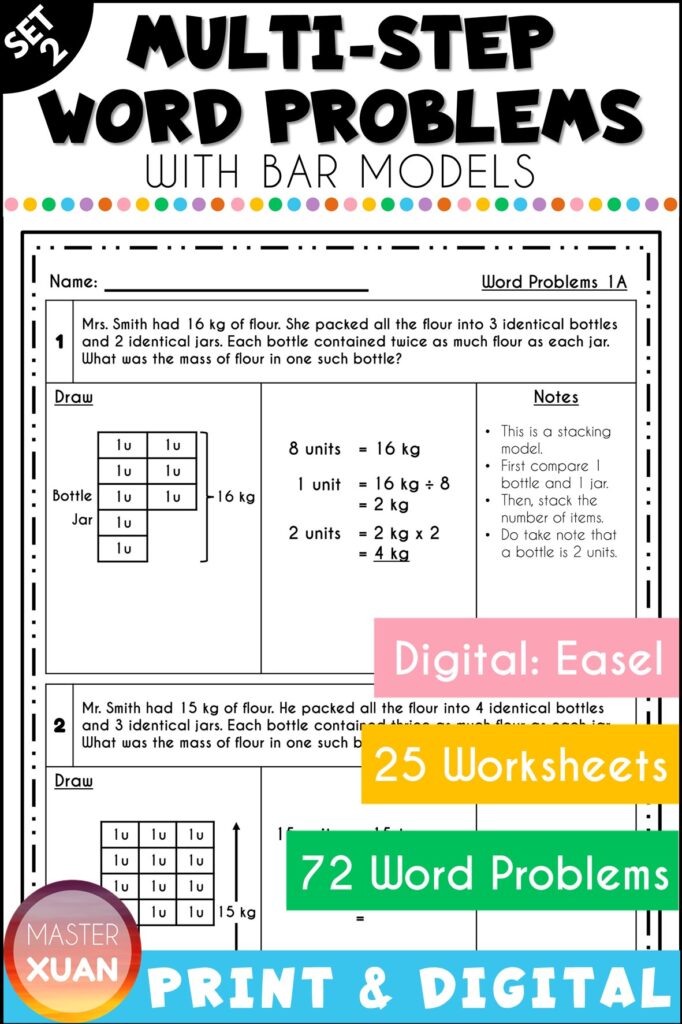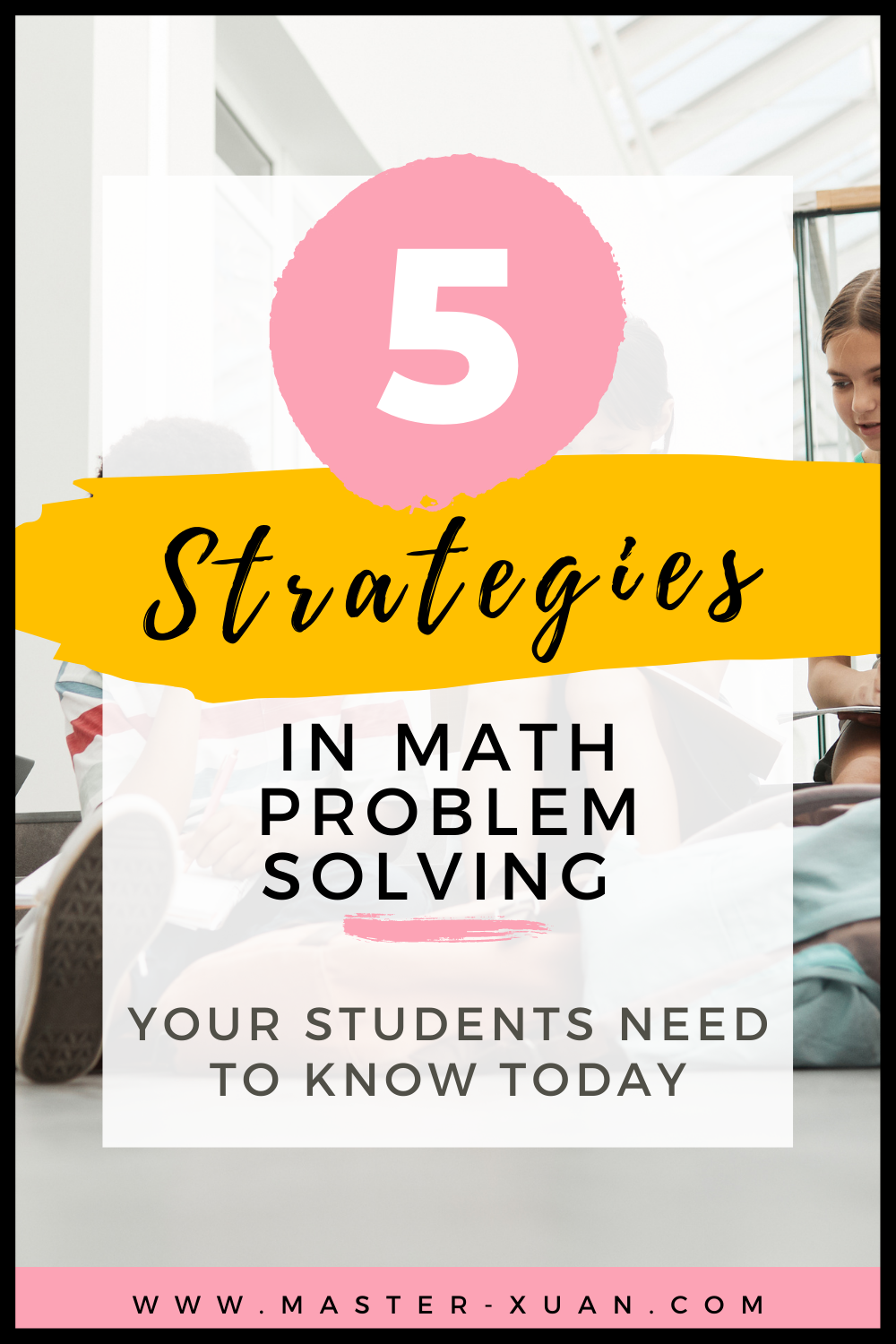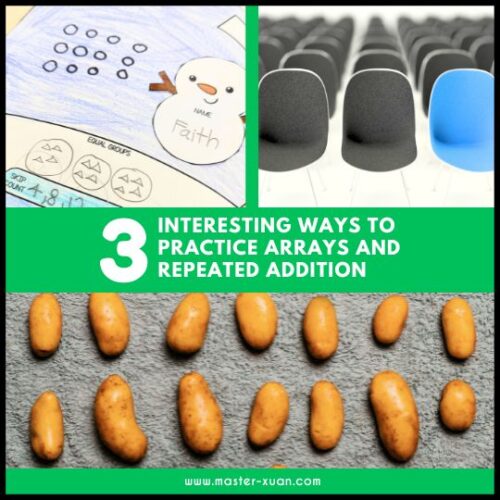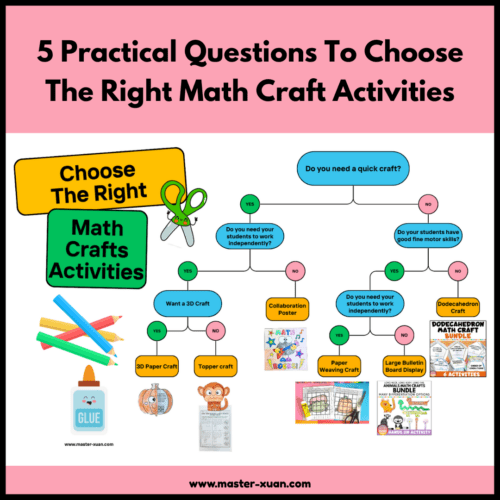There are many strategies in math problem solving but in this blog post, I will just share with you the 5 steps your students can use to solve a word problem.
Then continue reading as I’ll share why students struggle with word problems, the common errors they face, and how to help them.
5 STRATEGIES IN MATH PROBLEM SOLVING
Here are the 5 steps to math problem-solving.
1) Read the questions carefully
Instead of just reminding students to read the questions carefully, give them some actionable plan. The popular CUBES strategy is:
- Circle the numbers
- Underline the question.
- Box the key words.
- Evaluate: What steps do I take?
- Solve and Show your work. Check your answer!
If you prefer to keep it simple and let your students underline or highlight important information, do teach them what is considered important. Some students may just highlight the majority of the text and that defeats the purpose.
Teach students to look for keywords and phrases and how to identify concepts. For example, students will learn how to identify the ratio before and after concept when they saw a before ratio, change, and an after ratio.
Related Read: 7 Essential Concepts You Need To Know To Solve Ratio In Word Problems Easily
2) Draw pictures or models
It is easier to understand and make meaning of what the word problem is asking by drawing a picture of the math situation.
However, students wouldn’t know how to “translate” words to pictures automatically. Instead, they need you to teach them. So show students how the story is transformed into a model if possible.
One day, they will know how to draw the model to help themselves out.

3) Know the meaning behind every step
When students know the meaning of the value of each step of the solution, it shows that they comprehended how to solve the word problem thoroughly.
It is common to see students falling back to procedure (or instinct) instead of thinking about the reason or what the value stands for. So ask students or make them write the legend for each step.
4) Replace the value
Sometimes students will just be confused when the numbers get bigger, complicated, or in another form (e.g. fractions).
To deal with that and to let students comprehend what is the word problems trying to say, I will ask students to replace the value with a simpler number that they can solve.
That is just to let them see the relationship between the values, reminding them that the relationship doesn’t change just because the values change.
For example:
Mary has 8/9 m of cloth. She uses 1/3 m of cloth to make a napkin and 1/9 m of it to make a headband. How much cloth does she have left?
Replace the fraction with a whole number:
Mary has 9 m of cloth. She uses 3 m of cloth to make a napkin and 1 m of it to make a headband. How much cloth does she have left?
9 m – 3 m – 1 m = Ans
Students can easily tell that the relationship between the values or the operation to use is subtraction.
Conclude: 8/9 m – 1/3 m – 1/9 m = Ans
5) Check the reasonability of the answer
Some examples of striking warnings:
- If questions didn’t ask to round off, but students get an answer with a recurring decimal or irrational number but the answer can’t be in fraction (i.e. money).
- Most nouns can’t have decimals answer (e.g. humans).
- The individual character has a bigger value than the total sum of all the characters.
Why do Students Struggle with Math Word Problems?
It is important to know why students have trouble with word problems. After all, we can only solve the problem when we know what the problem is.
So why are word problems so hard for students? That’s because students need to undergo these 3 steps to be able to solve word problems and each step has room for errors:
- Read and understand the text correctly.
- Identify which operations and steps are needed to find the answer.
- Accurately calculate the answer and write them down.
Furthermore, to make matters more complicated, there are many other factors (and they can be a combination of factors) why your students have difficulty solving word problems.
For example, students may not have the prior knowledge to solve application questions. Or students may have a dislike for word problems.
Common Mistakes When Students Solve Math Word Problems And How To Tackle Them
Here are the 5 common mistakes that students often make when facing word problems.
- Having A Fixed Mindset
- Struggle With The Text
- Use The Incorrect Operation
- Calculate Incorrectly
- Encode Response Incorrectly / Transference Error
Having a fixed mindset
Students may have a negative experience with word problems and every time they see a word problem, the first thing that comes to mind is “I can’t do it.”
And students wouldn’t just change their minds even if you tell them otherwise.
Unfortunately, this obstacle can’t be solved easily and quickly. Fostering a growth mindsets take time, effort, and consistent practice.
Guiding students on how to tackle word problems and showing them that they can solve them will help. Reading affirmations can also help in positive thinking.
Related read: Word Problems In Maths: 13 Important Teaching Tips You Need To Know
Struggle with the text
Students may have difficulty understanding the text such as the vocabulary or math terms. Or they skip certain words when reading the text.
Going through the vocabularies and math terms can help them understand the question better.
But teaching students how to react when they face words that they don’t know during tests is also important.
Some vocabulary terms in the text may not affect how students understand the questions and they need to learn to focus on the main thing.
For example, students may not know what is the object (e.g. diskettes or cassettes). But that should not deter them from answering the word problem.
If students tend to skip or missed keywords when reading, ask students to point as they read to guide their eyes.
Consider trying out these prompts:
- Can you reread the question aloud to me?
- What is the question asking us to do?
Use the incorrect operation
Students may use the incorrect operation when they misunderstood the question.
Knowing some common keywords for word problems can be of some assistance.
Explaining the questions or using some of the strategies in math problem solving mentioned above can help..
Or use these prompts to guide students:
- Can you think of any strategies we use to help us solve this?
- What is our first step?
- What is our next step?
- How did you find your answer?
- Can you walk me through how you found your answer step by step?
Calculate incorrectly
If students have a weak foundation, like to rush through, or simply tend to be careless, you will find that they know the steps but get them wrong due to wrong calculations.
If students are weak in certain math skills, giving them more practice on the specific math skills will help build math fluency.
Encode response incorrectly / Transference error
This mistake usually means they understand the question and know how to solve it but somewhere in their workings, they wrote the wrong number, and they get a wrong answer.
Transference error could occur…
- At the very beginning, where they copied down the wrong values from the questions.
- In the middle, where they copied the wrong answer from their calculation to the equation.
- At the very end, where they copied the final answer from their equation to the answer line wrongly.
The only way to prevent this mistake is to ask students to check their work. Especially if they tend to make this mistake.
Final Thoughts
It is very common for students to do badly in word problems as they require more skills. With more practice and the correct guidance, they will master word problems one day.
Here is the summary:
5 Strategies In Math Problem Solving
- Read the questions carefully
- Draw pictures or models
- Know the meaning behind every step
- Replace the value
- Check the reasonability of the answer
Common Mistakes When Students Solve Math Word Problems And How To Tackle Them
- Having a fixed mindset – Read affirmations
- Struggle with the text – Read the text carefully and learn the vocabulary
- Use the incorrect operation – Draw the model and understand the question
- Calculate incorrectly – Do more practice
- Encode response incorrectly / Transference error – Check the workings
Which math problem solving strategy do you think is the most useful? Let your teacher buddies know!
Related read: Word Problems In Maths: 13 Important Teaching Tips You Need To Know
Here are some pins that you can save to bookmark this post. Save them to your Pinterest Board now! ↓








